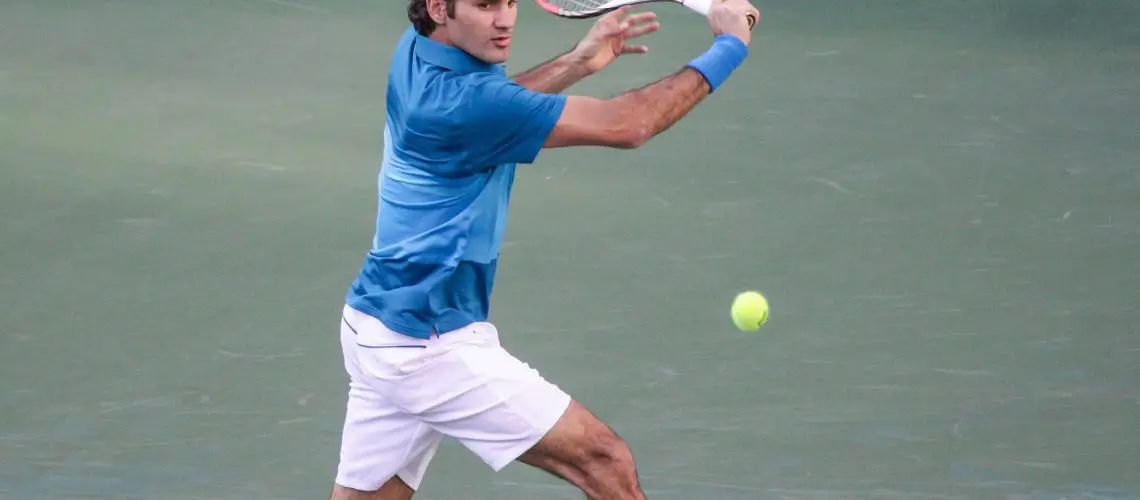We may earn money or products from the companies mentioned in this post.
Brief history of tennis tiebreaks

Tennis, a sport known for its intense rallies and competitive nature, has seen various scoring systems throughout its history One significant development in the game was the introduction of tiebreaks, which revolutionized how sets are decided
1 Origins and evolution of the tiebreak system
The concept of a tiebreak was first introduced in the 1960s by James Van Alen, who wanted to create a more exciting and time-efficient way to determine set winners His idea gained traction among tennis officials, leading to the implementation of the tiebreak system
Over time, different variations of tiebreak rules emerged as tennis organizations aimed to refine and standardize the scoring method Today’s most commonly used format is known as the “7-point” or “first-to-seven” tiebreak
2 Traditional scoring vs modern tiebreak systems
Prior to the introduction of tiebreaks, tennis matches relied on traditional scoring methods where players had to win sets by a significant margin – often requiring them to be ahead by two games or more
This traditional approach sometimes led to prolonged matches that could extend well beyond their expected duration, causing scheduling issues for tournaments and fatigue for players
Importance of tiebreaks in tennis matches

Tiebreaks have become an integral part of modern tennis due to their ability to add excitement and clarity when deciding close sets and matches
1 Deciding close sets and matches
In tightly contested sets where both players display exceptional skills, reaching a scoreline like 6-6 can create immense pressure for both competitors The introduction of a tiebreak allows for a fairer resolution within a shorter time frame
By implementing a tiebreak, players can now battle it out in a condensed format, where the first player to reach a specified number of points (usually seven) wins the set This system adds an element of suspense and ensures that matches progress smoothly
2 Impact on player strategies and mental toughness
Tiebreaks not only affect how sets are determined but also influence player strategies and mental fortitude during crucial moments
When facing a tiebreak situation, players must adapt their game plan to account for the increased pressure and heightened stakes The ability to maintain composure, make strategic decisions, and execute shots effectively becomes paramount in securing victory
Additionally, tiebreaks test a player’s mental toughness as they navigate high-pressure situations and face the possibility of losing or gaining momentum in the match
By employing tiebreaks in tennis matches, the sport has become more dynamic and spectator-friendly These scoring systems have brought excitement to close sets while challenging players’ skills and mental resilience As tennis continues to evolve, tiebreaks remain an integral part of the game’s fabric
Understanding the Tiebreak Scoring System

Tennis is a game of strategy, skill, and precision And when it comes to close matches, tiebreaks add an extra layer of excitement Let’s dive into the basic structure and rules of a tiebreak in tennis
Basic Structure and Rules of a Tiebreak in Tennis
In tennis, when both players or teams reach 6-6 in a set, a tiebreak is initiated This means that after battling point by point, the match has reached an impasse and needs a decisive winner The tiebreak is designed to break this deadlock
The objective during a tiebreak is simple: be the first player or team to reach seven points with at least a two-point advantage This ensures that there is a clear victor in what could have been an endless back-and-forth battle
Point Distribution During a Tiebreaker
During a tiebreaker, players take turns serving points after their initial serve This alternating service pattern adds an additional element of fairness to the game
After every six points played during the tiebreak (three each), the server changes This rotation allows both players or teams to experience equal opportunities from different sides of the court
1 Server Change After Every Six Points
The server change after every six points ensures that no player has an unfair advantage due to factors like wind or lighting conditions on one side of the court
2 Switching Sides After Every Six Points Played
In addition to changing servers, players also switch sides of the court after every six points played during the tiebreaker This further evens out any potential advantages related to court conditions or other external factors
Common Misconceptions About Tennis Tiebreaker Points
Despite the straightforward nature of tiebreakers, there are some misconceptions that can cloud understanding One common misconception is that a player or team must win by two clear points in each individual point However, this is not the case The requirement for a two-point advantage only applies when reaching the total of seven points
Another misconception is that the tiebreak counts as an additional game in the set’s scoreline In reality, the tiebreak is a separate mini-game designed to determine a clear winner when both players or teams have reached 6-6 in a set
By understanding these rules and clarifying any misconceptions, you’ll be able to fully grasp and appreciate the thrilling nature of tiebreaks in tennis
Tie Break Variations: Different Types Used in Tennis Tournaments

When it comes to tennis tournaments, tie breaks are a crucial element that can make or break a player’s chances of winning These nail-biting moments often bring excitement and suspense to the game, adding an extra layer of intensity for both players and spectators alike However, not all tie breaks are created equal In this article, we will explore three different variations of tie breaks commonly used in tennis tournaments: Regular Tie Break, Super Tie Break, and Fast4 Tie Break
Regular Tie Break (7 points)
The Regular Tie Break is perhaps the most well-known variation used in traditional tennis tournaments like Grand Slams It consists of a race to seven points, with the first player to reach seven points (and have at least a two-point lead) declared as the winner of the set This type of tie break ensures that matches do not drag on indefinitely and provides a clear-cut conclusion to the set
Advantages of the Regular Tie Break include its simplicity and ability to add intensity to close sets It allows players to showcase their mental toughness and strategic skills under pressure However, some critics argue that it can disrupt the natural flow of the game by turning it into a mini-match within a match
Super Tie Break (10 points)
In doubles events or deciding set situations where time constraints may be a factor, tournament organizers often opt for the Super Tie Break Unlike the Regular Tie Break, which requires players to win by two points after reaching seven, this variation raises the bar by requiring players to reach ten points instead
The advantages of employing the Super Tie Break lie in its ability to provide quick conclusions while still maintaining an exciting level of competitiveness It prevents matches from running excessively long and allows players to showcase their skills in a condensed format However, some argue that the Super Tie Break may not provide a fair representation of each player’s abilities, as it is more susceptible to luck and random fluctuations
Fast4 Tie Break (5 points)
The Fast4 Tie Break is a relatively new addition to the tennis scene, specifically designed for Fast4 format tournaments In this variation, players compete to reach five points, with no requirement for a two-point lead The first player to reach five points wins the set
The main advantage of the Fast4 Tie Break is its ability to significantly shorten matches without compromising on excitement or competitiveness It caters to modern audiences who value fast-paced action and instant gratification However, critics argue that it may sacrifice the depth and strategic elements found in longer sets
In conclusion, tie breaks are an integral part of tennis tournaments, providing thrilling moments that can swing the momentum of a match Whether it’s the Regular Tie Break used in prestigious Grand Slam events or the Super Tie Break and Fast4 Tie Break employed in specific situations, each variation brings its own unique advantages and disadvantages Ultimately, it is up to tournament organizers and governing bodies to decide which type best suits their event’s objectives and constraints
Strategies for Success during Tennis Tie Breaks

Mental approach during high-pressure situations
In the intense moments of a tennis tiebreaker, maintaining a clear mindset is crucial Staying focused and managing stress levels can make all the difference between success and defeat By blocking out distractions and staying in the present moment, players can channel their energy into executing their shots with precision
Leveraging past experiences is another powerful mental tool to handle key moments in tiebreakers Reflecting on previous matches where they excelled under pressure can provide players with a boost of confidence and remind them of their ability to thrive in high-stakes situations
Technical aspects that contribute to success in a tiebreaker
Serving strategies play a significant role in determining the outcome of a tiebreaker Opting for high-percentage serves, such as well-placed first serves or kick serves, can help players start off on the right foot by putting pressure on their opponent right from the beginning
Aggressive return tactics are equally important in gaining an edge during tiebreakers Returning deep and aggressively can force opponents into defensive positions, allowing players to seize control of the point and dictate play
Adapting game plans based on opponent’s strengths and weaknesses
Analyzing an opponent’s strengths and weaknesses becomes even more critical during tiebreak situations Recognizing patterns in point construction can help players anticipate their opponent’s next move and adjust their strategy accordingly
To counteract opponent strategies effectively, it is essential to mix up shots and vary pace throughout the tiebreaker By keeping opponents guessing, players can disrupt their rhythm and create opportunities to capitalize on any weaknesses exposed
Conclusion

The mastery of tennis tiebreaks is paramount for overall success in the sport Tiebreak performance can have a significant impact on a player’s rankings and tournament results, shaping their tennis legacy Therefore, it is crucial to practice and develop efficient tiebreak strategies
Players should strive for continual improvement in both mental and technical aspects of the game, honing their focus and executing high-percentage shots during tiebreaker situations Additionally, learning from top players by analyzing their performances in tiebreak situations can provide valuable insights and inspiration for enhancing one’s own game
Useful Links

Rules For Playing a 10 Point Tie Break
Tennis | Rules and Equipment | Scoring basics: tie-break
Standard Tiebreak for Tennis
What’s a Tennis Tiebreaker? How Do they Work?
How to Play a Tiebreaker, History, and More
3rd Set Match Decider – Use a Match Tie-Break (10 points) …
▷ What Is Tie Break In Tennis? SIMPLE Explanation 2021
The history of the tie-break
12-Point Tie-Break
What is the tie-breaking rule in tennis?
8 Tips To Win More Super Tie Breakers
Grand Slams to test 10-point tiebreak in final set at all four …
How To Record A Tiebreak – Support – Universal Tennis
Tennis Scoring & Tiebreakers | – Tennis Express Blog
Tennis Tie-breaks Made Easy
Tie-Break Serving Order. Meaning in tennis. Definition. …
Tennis Tiebreaker Guide: The History and Rules of Tiebreaks
Tiebreaker Rules and Scoring System at the 2023 …
Explaining the rules of a tie-break in tennis
Tennis explained: Learn the game






